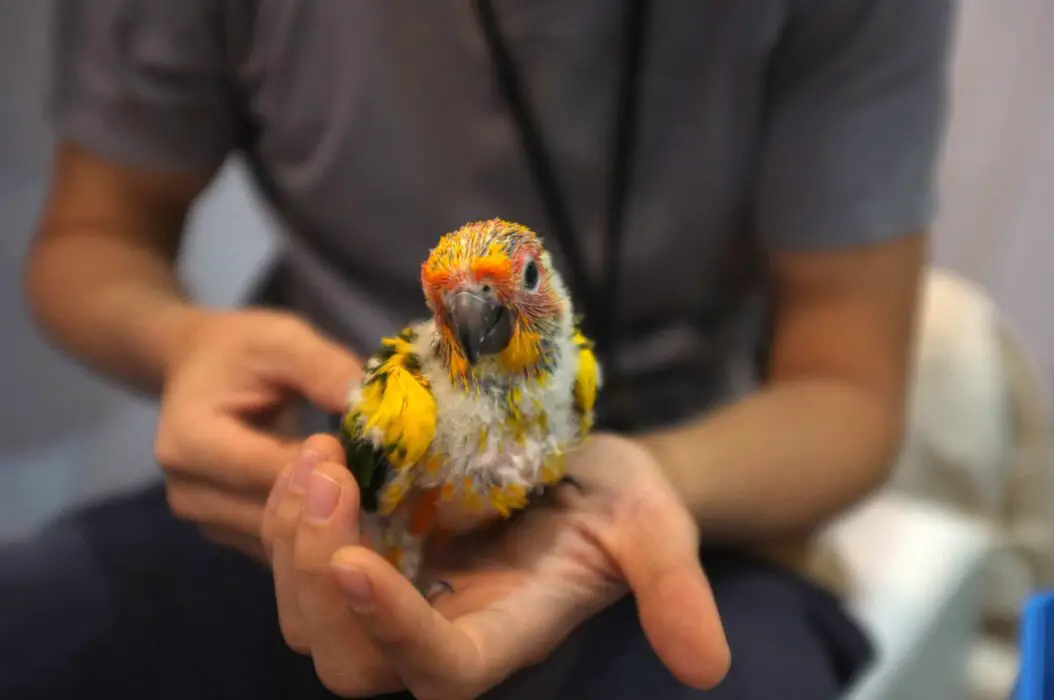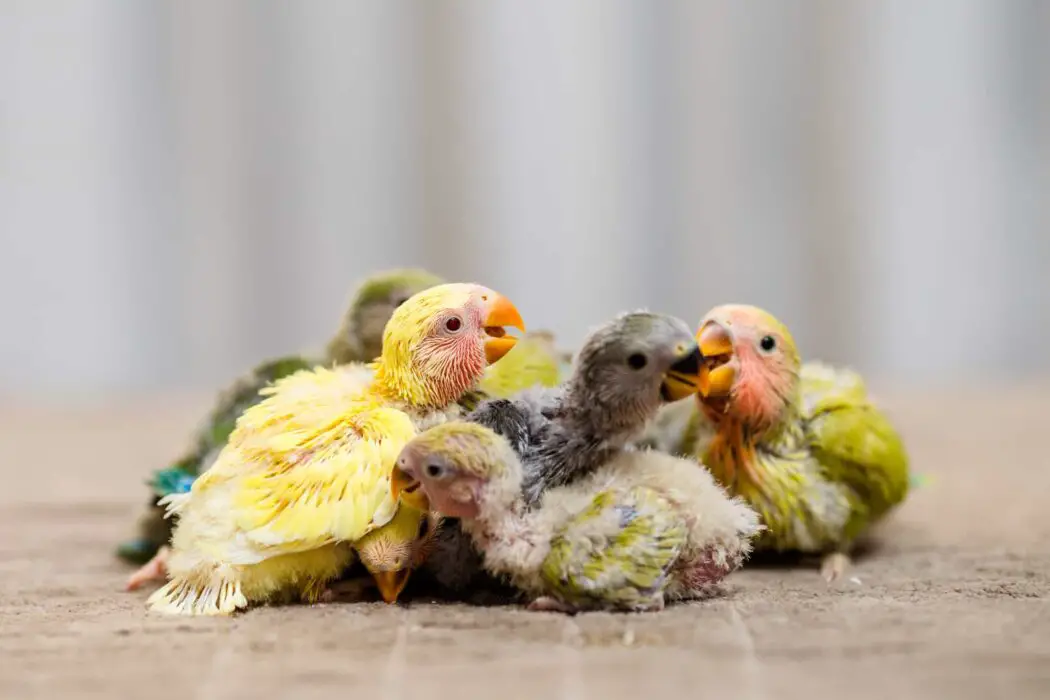Parrots are great pets for humans. They become long-living companions and will bring joy into one’s life for more than 10-20 years.
Having a parrot is not easy work to do. Usually, having one parrot takes lots of time and consideration, but having two and more parrots requires even more work. At the same time, breeding a parrot includes tons of work, knowledge, and commitment.
Still, some people like to breed parrots for several reasons. This may be because they love parrots so much that they are ready to breed them. Or maybe they want to earn some money. No matter what the reason is, breeding requires lots of effort and research.
So the question parrots are easy to breed arises typically in your mind.
The answer is no; it isn’t easy to breed a parrot. It takes a lot of time, commitment, knowledge, and money. So with that in mind, if you still wish to go that way, be sure to be prepared. And you will be rewarded!
In today’s article, we’ll dive deeper into the questions that arise for parrot breeders:
- What will you need to breed a parrot?
- How do you breed a parrot?
- What to expect during breeding season?
- Is breeding a good idea for me?
What Will You Need to Breed a Parrot?

Of course, if you decide to breed a parrot, you will need a range of supplies for that process. These are:
Breeding Cages
Such cages are known as double cages or divided bird cages. They are the two cages with one mid-section that you can remove if needed.
Each side of such a double cage contains all the parrot needs – water, food, and toys.
The double cage differs from a regular cage by the possibility of removing the centerpiece. This can be done during the breeding season and allows parrots to mate with each other.
Parrots live together during the rest of the season, separated by the centerpiece, getting to know each other. So the breeder can see if birds are making compatible pairs.
What Are the Best Parrot Cages? Learn How to Choose One!
Breeding Boxes
Breeding boxes are places where the female parrot can lay eggs. It’s usually located on the side of the breeding cage.
Such boxes are usually dark and have a small window that allows looking inside the breeding box.
Incubator
After you have got fertilized eggs, you have two ways:
- You can let the female parrot incubate eggs
- You can invest in an incubator
The first option is good if you want to involve the female parrot in the breeding and chick raising processes.
The second option is suitable if you plan on raising and selling parrots or when the female parrot becomes ill and can’t do the job.
The incubator mimics the atmosphere and process of natural incubation. They provide enough heat to the eggs and rotate the laid eggs, so the heat is dispersed evenly through all the surfaces.
Brooder
If female and male parrots are not involved in the chick raising process, you will need to buy a brooder.
It’s a box where the chick goes after hatching the egg. Brooder makes enough heat and proper humidity level that baby chick needs until the chick grows up and becomes capable of regulating their own heat.
Food, Nutrition, And Supplements
To raise chicks, you will need to buy a special food that is recommended for breeding chicks.
How Do You Breed Parrots?

Step 1: Select your parrots
The first thing to do when you decide to breed parrots is obviously to choose which ones you will be breeding.
You should find out about the reproducing determinations of that specific species from that point.
Every type of parrot is somewhat divergent in its reproducing needs.
For instance, various parrot species become mature and ready for breeding at different ages. However, usually, most species sexually mature around 1 to 4 years of age.
Some parrot species are more accessible to breed than others. They are:
- budgies,
- parakeets,
- lovebirds,
- cockatiels,
- green-cheeked conures.
Since there are so many various types of parrots, it would be hard to list the rearing requirements of all; however, a small amount of examination can make a remarkable difference.
Likewise, you’ll need to give every one of your parrots a health check to guarantee that they are sound before rearing them.
5 Signs That a Parrot Wants to Mate: How to React?
Step 2: Make sure your parrots are compatible
The parrots do the same as all people looking for a compatible life partner.
So before putting two birds together in one cage, you need to be sure they are compatible.
Be ready, as this process can take a year or two. The younger the parrot will be, the better will be the result. So start getting acquainted with young parrots.
Parrots are a monogamous breed. This means they mate only with one partner in their life.
So if you have already mated a female with a male parrot, you probably will have trouble remating them in the future. So take time and select your mates wisely.
Step 3: Purchase your supplies and equipment
Prepare the parrot breeding place and all supplies like cages, boxes, and special food mentioned above.
Best Incubator For Parrot Eggs 2021 — Buyers Guide
Step 4: Watch for signs of breeding season
Parrot’s breeding season typically starts in spring, and the weather changes. When it starts to get warmer and you hear birds’ songs outside, the chances are that mating season is started. So you can start to watch out for mating signs in your parrot.
Your male parrot might do an exceptional dance for the female or begin to cushion their plumes to make themselves look more significant and more alluring.
Thanks to the hormonal change during spring, parrots become moody and territorial. They can bite you, scream more than usual, and act in a not common way for their everyday behavior. But don’t worry; such behavior will not last long and will end with the end of the mating season.
It’s important to notice such mating signs because a parrot’s mating season will last only 1 or 2 weeks. If you miss this time, you will have to wait for the following years to breed your parrots.
Step 5: Care for the egg
The successful mating season will result in two and more fertilized eggs. After the female parrot lays the eggs, it’s time to take care of them.
At this stage, you have two options: leave the eggs for parents to take care of them or use the incubator for eggs.
The whole hatching process takes between 24 and 28 days, after which you ought to have yourself a petite parrot chick to really focus on!
Are Parrots Safe for Families With Babies?
What Can Go Wrong?
Sadly, breeding sounds significantly more straightforward than it really is, and there are a few things that can turn out badly during the reproducing period.
These situations include but are not limited to:
- Calcium deficiency in females can result in egg binding.
- Breeding is natural stress for parrots, and it can lead to aggression in parrots. The male can starts attacking the female or the eggs. The stress can also lead to illness in parents.
- The right temperature should be supported throughout nesting. If the temperature is wrong or fluctuates, parrots may not breed. Plus, the nesting temperature differs for different parrot species.
- The parrots can go along well or aren’t compatible at all.
Consequently, you want to do your diligence before reproducing. Every species has different breeding options that you ought to follow for the best outcomes.
Is Breeding Right for You?
To understand if breeding is for you or not, you should answer a range of questions to help understand if you are a good breeder:
Do I have enough room for breeding?
Does my drafting region take into consideration rearing?
Will my neighbors be bothered by my breeding?
Am I able to risk the relationship I have with my parrot? (in the wake of breeding, your parrot’s attention will be on their young, and your relationship might assume a lower priority)
Do I have enough time to invest in breeding?
Am I experiencing the same thing to have the option to buy the appropriate supplies as a whole? Would I be able to bear to take care of child chicks?
Do I have enough knowledge to breed parrots properly?
Signs Your Parrot Is Pregnant: Don’t Worry, Be Ready!
Assuming you addressed yes to these inquiries, rearing could be a possibility for you.
If you have not reared parrots previously, it’s prompted that you address an expert.
The more exploration you do, the more pre-arranged you can be to raise blissful and solid child chicks.


